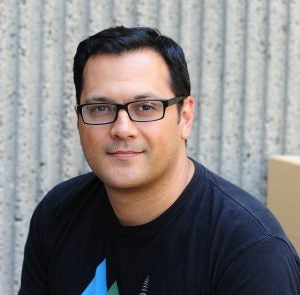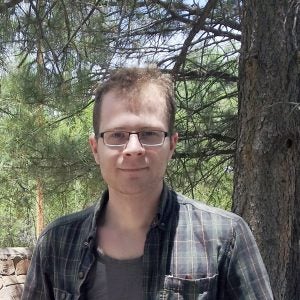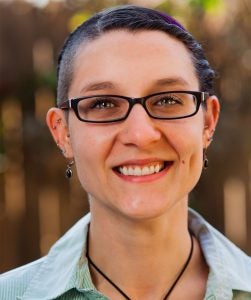Professor and Chair
Department of Entomology and Nematology, University of California, Davis
530-752-2121 (office) 530-754-4321 (lab) sanadler@ucdavis.edu
Ph.D., Medical Parasitology, 1985, Louisiana State University Medical Center, New Orleans
M.S., Medical Parasitology, 1982, Louisiana State University Medical Center, New Orleans
B.S., Biological Sciences, 1980, Missouri State University
Ph.D. Candidate
Department of Entomology and Nematology, University of California, Davis
530-754-4321 (lab) lsaulgershenz@ucdavis.edu
M.S., Ecology and Systematics, 2001, San Francisco State University
B. S., Ecology and Biology, San Francisco State University
Interests: My research interests include the evolution of chemical mimicry systems and the selection pressures on sex pheromone communication system of bees. My research includes host range evolution of parasites using functional and molecular traits as filters for host choice. I am also interested in the pollination ecology and community assembly of native bees ecosystems. My previous research documented cooperative aggressive chemical and visual mimicry in a bee nest parasite, Meloe franciscanus (Meloidae) (Saul-Gershenz and Millar 2006). The larvae of Meloe franciscanus cooperate to mimic the sex pheromones of the solitary bee Habropoda pallida female to lure in males. The larvae then attach to the male bee and then transfer to female bees when the male attempts to copulate with the female bee.
Ph.D. Student
Department of Entomology and Nematology, University of California, Davis
530-754-4321 (lab) capagan@ucdavis.edu
B. S., Biochemistry and Molecular Biology, 2003, University of California, Davis
Interests: Nematodes are probably the most abundant multicellular animals on earth. They can be found in nearly all biomes, trophic levels, and functional groups. Despite their ubiquity and their taxonomic and functional diversity, there are only about 27,000 species described, and there is a paucity of information about their life history and ecology. Soil dwelling nematodes are the focus of my Ph.D. research. I use a variety of molecular methods in an attempt to characterize trophic relationships among free-living species in desert soil. Ultimately, I hope to learn how these nematodes contribute to below-ground ecosystems.
Ph.D. Student
Department of Entomology and Nematology, University of California, Davis
530-754-4321 (lab) cmparker@ucdavis.edu
B. S., Evolution, Ecology and Biodiversity, 2011, University of California, Davis
Interests: Research focuses on flight and host selection behavior, as well as symbiotic nematode communities of invasive bark beetles.
Department of Entomology and Nematology, University of California, Davis
530-754-4321 (lab) lecampbio@gmail.com
Ph.D., Ecology, 2016, University of California, Davis
M.S., Biology, 2007, Wake Forest University
A.B., Biology, 2001, University of Chicago
Interests: I have been working with animal parasitic nematodes since starting my master’s project in 2005. My doctoral research in the Nadler lab focused on the evolutionary relationships and genetic structure of a nematode parasite of raccoons, Baylisascaris procyonis, also called raccoon roundworm. Raccoon roundworm is common in raccoons in much of North America, and it can also infect humans. Human infections with B. procyonis are rare, but can cause serious health complications if not detected early. Understanding the genetics of this parasite may help prevent human infections. My current research and career interests are in infectious diseases, genetics and genomics, science communication, and student affairs.




